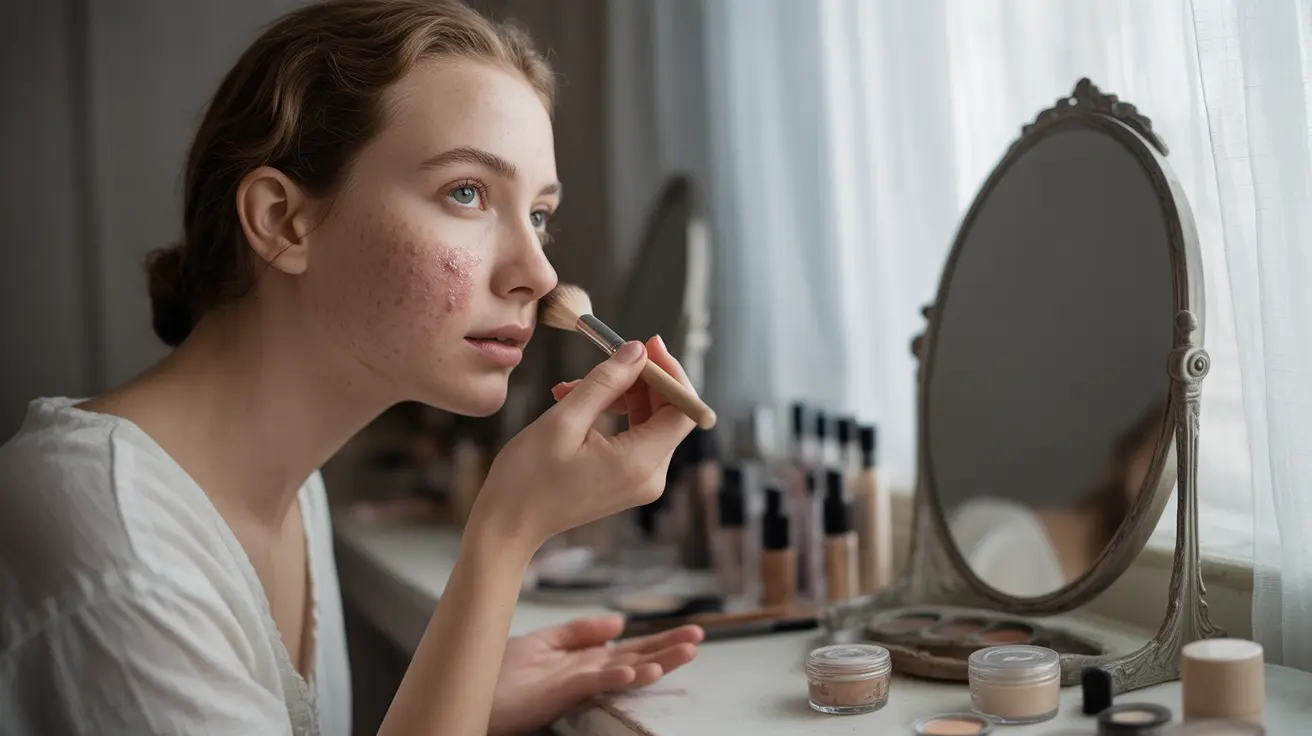Living with acne can be challenging, but with the right makeup techniques and products, you can achieve natural-looking coverage while maintaining healthy skin. This comprehensive guide will help you master the art of concealing blemishes without compromising your skin's health or triggering new breakouts.
Choosing the Right Products for Acne-Prone Skin
The foundation of successful acne coverage starts with selecting appropriate makeup products. Look for items labeled "non-comedogenic," which means they won't clog your pores. Water-based foundations and concealers are typically better choices than oil-based alternatives.
Understanding Mineral Makeup Benefits
Mineral makeup has become increasingly popular for acne-prone skin, and for good reason. These products typically contain fewer irritating ingredients and provide natural-looking coverage while allowing your skin to breathe. Many mineral foundations also contain zinc oxide, which has anti-inflammatory properties that can help calm irritated skin.
Essential Steps for Applying Makeup Over Acne
Prep Your Canvas
Before applying any makeup, ensure your face is clean and properly moisturized. Use a lightweight, oil-free moisturizer and allow it to fully absorb for about 5-10 minutes. If using any acne treatments, apply these first and let them dry completely.
Color Correction Techniques
For particularly red blemishes, use a green color corrector before applying concealer. Apply it sparingly only on the red areas, as too much can make your makeup look cakey. Pat gently with your finger or a small brush to blend, don't rub.
Foundation Application
Apply foundation using clean fingers, a beauty sponge, or a brush - whichever method works best for your skin type. Start with a thin layer and build up coverage only where needed. This approach helps prevent the makeup from looking heavy or obvious.
Setting Your Makeup for Long-lasting Coverage
To ensure your coverage stays in place throughout the day, consider these essential steps:
- Use a lightweight setting powder specifically formulated for sensitive skin
- Apply powder with a gentle pressing motion rather than sweeping
- Carry blotting papers for touch-ups instead of adding more powder throughout the day
- Consider using a setting spray designed for sensitive skin
Ingredients to Watch Out For
When selecting makeup products, avoid these potential irritants:
- Fragrances and artificial dyes
- Alcohol (denatured)
- Heavy oils
- Bismuth oxychloride
- Talc
- Silicones (in some cases)
Frequently Asked Questions
What are the best makeup products to use for covering acne without causing more breakouts?
Look for non-comedogenic, fragrance-free products that are specifically formulated for sensitive or acne-prone skin. Mineral-based foundations and concealers are excellent choices, as they typically contain fewer irritating ingredients and provide good coverage without clogging pores.
How can I apply makeup to hide blemishes while keeping my acne-prone skin healthy?
Start with clean hands and tools, use a gentle primer, and apply products in thin layers rather than one thick layer. Always remove makeup thoroughly at night and clean your makeup brushes regularly to prevent bacterial growth.
Why is mineral makeup recommended for acne-prone and sensitive skin?
Mineral makeup typically contains fewer irritating ingredients, provides natural-looking coverage, and often includes beneficial ingredients like zinc oxide and titanium dioxide. These ingredients can have anti-inflammatory properties and offer some sun protection.
Which ingredients should I avoid in makeup if I have acne-prone skin?
Avoid products containing heavy oils, fragrances, denatured alcohol, bismuth oxychloride, and talc. These ingredients can potentially clog pores or irritate sensitive, acne-prone skin.
How do I set and touch up acne-covering makeup to maintain a natural look all day?
Set your makeup with a light dusting of non-comedogenic setting powder, using pressing motions rather than sweeping. For touch-ups, use oil-blotting papers first, then lightly pat on additional powder only where needed. Avoid heavy touching or rubbing of the skin throughout the day.




